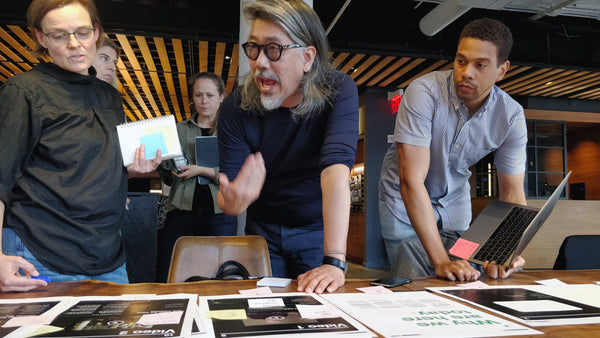
Being a good leader is as much about connecting with your people as it is about bringing knowledge and skills to the table. Feedback moments can build a deeper kinship with the people on your team and grow your capabilities as a creative, human-centered leader.
But giving feedback can make anyone feel a bit squeamish. Whether it’s concern about hurting a colleague’s feelings, ensuring your words are not misinterpreted, or being too honest and having it backfire, there are lots of emotions wrapped up in the process.
As a leader, you’re responsible for asking for feedback—both to gain valuable insight into areas of improvement and to encourage communication and vulnerability among your team by actively demonstrating those qualities yourself.
The trick is to separate facts from feelings when giving and receiving feedback, says Keith Yamashita, SYPartners Chairman and Founder and instructor in our class From Superpowers to Great Teams.
Separate Feedback Into 3 Parts
In a recent Creative Confidence Series webcast, Keith shared an easy way to think about feedback by separating it into three parts. Next time you ask for feedback from someone, listen to their response and pull out these three elements:
- What factually happened in the scenario described?
- What “hot thought” did that action trigger?
- What was the story told about that hot thought?
This tool can be used to work backward to interpret emotionally charged feedback, as well as being a great teaching tool to show your team how to give constructive feedback going forward.
For instance, someone might share that they don’t feel respected as part of the team. Encourage them to look back at what scenario or action triggered that feeling and what caused them to interpret the action as a lack of respect. You might discover that they didn’t get to speak much in a recent team meeting (the fact), which they interpreted to mean their contributions weren’t important to the team (hot thought), which in turn means that they are not respected by leadership (the story they told themselves).
When you break up your experience into these three elements, you’re able to give and receive much more substantive feedback. Keith says, “you come to a place of great human understanding and often leave that feedback feeling a much deeper kinship with the other person.”
The most important part of the feedback process is taking dual ownership—asking what you each could have done better to improve a situation or outcome. Now that you’re on the same page about the facts, you can have a more productive conversation about the feelings and feedback they elicited.
To learn more about your unique strengths, build stronger relationships, and unlock greatness in your team, check out our on-demand class, From Superpowers to Great Teams. Our 5-week online course, Cultivating Creative Collaboration, also dives deeper into giving and receiving feedback as a teammate and leader.
- choosing a selection results in a full page refresh
- press the space key then arrow keys to make a selection



